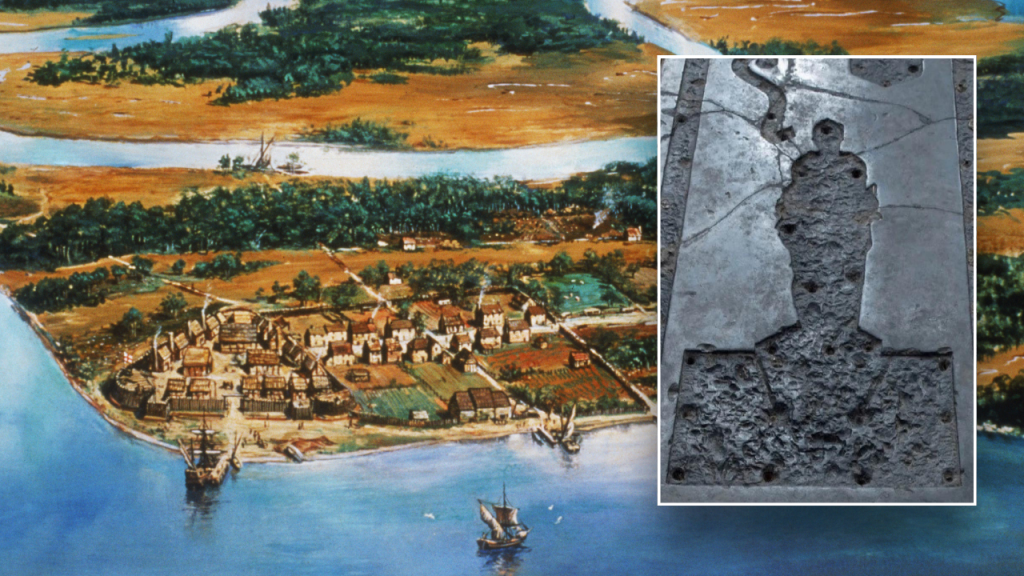Archaeologists have discovered new information about the oldest tombstone in the United States, dating back nearly 400 years. The tombstone was set up in the Jamestown settlement and belonged to an English knight, but experts were unsure of its origin and composition until now. A study published in the International Journal of Historical Archaeology revealed that the black limestone of the tombstone actually came from Europe, shedding light on the trade routes of the time. Wealthy colonists in Virginia at the time preferred black ‘marble’ for their tombstones, which was actually polished black limestone, likely transported from Belgium.
The black limestone tombstone at Jamestown was not made from local fossils as previously thought but was likely quarried and cut in Belgium, then transported down the Meuse River to London where it was carved and brass inlays were installed. Finally, it was shipped to Jamestown as ballast, showcasing a small piece of the rapidly expanding Atlantic world of colonial trade. While historians have not definitively identified the individual buried beneath the tombstone, it is believed to be Sir George Yeardley, the governor of Virginia at the time of his death in 1627. If the tombstone belonged to Yeardley, it would be the oldest black ‘marble’ tombstone in the Chesapeake Bay region and potentially the oldest surviving tombstone in America, with engraved monumental brass inlays.
The study, titled “Sourcing the Early Colonial Knight’s Black ‘Marble’ Tombstone at Jamestown, Virginia, USA,” highlights the significance of engraved tombstones as a way for affluent English colonists to exhibit their wealth and memorialize themselves in seventeenth-century Virginia. The research findings provide valuable insights into the trade routes of the time, particularly the transatlantic trade from continental Europe to Jamestown, which primarily flowed through London. The discovery of the European origin of the black limestone tombstone challenges previous assumptions about its composition and highlights the complex nature of colonial trade networks in the Atlantic world.
The tombstone at Jamestown represents a unique piece of history, not only for its age but also for its craftsmanship and material composition. The use of black ‘marble’ tombstones by wealthy colonists in the Chesapeake Bay region during the seventeenth century reflects the cultural and social practices of the time. The tombstone’s connections to Europe through its stone sourcing and processing offer a glimpse into the interconnected nature of colonial trade networks, which played a crucial role in shaping the early settlements in America. The study provides a compelling narrative of the tombstone’s journey from a Belgian quarry to a prominent colonial settlement, highlighting the global perspectives of early American history.
The tombstone’s association with Sir George Yeardley, if confirmed, adds another layer of historical significance to the discovery. As the governor of Virginia, Yeardley played a key role in the early governance of the colony and his burial at Jamestown further contributes to the rich tapestry of American history. The presence of engraved brass inlays on the tombstone, a rare feature among English colonial tombstones, underscores its unique status in the region. The study’s findings not only contribute to a better understanding of the tombstone’s origin and composition but also offer a glimpse into the social, cultural, and economic dynamics of early colonial America. The tombstone at Jamestown stands as a testament to the intricate networks of trade and exchange that shaped the development of the English colonies in America during the seventeenth century.


